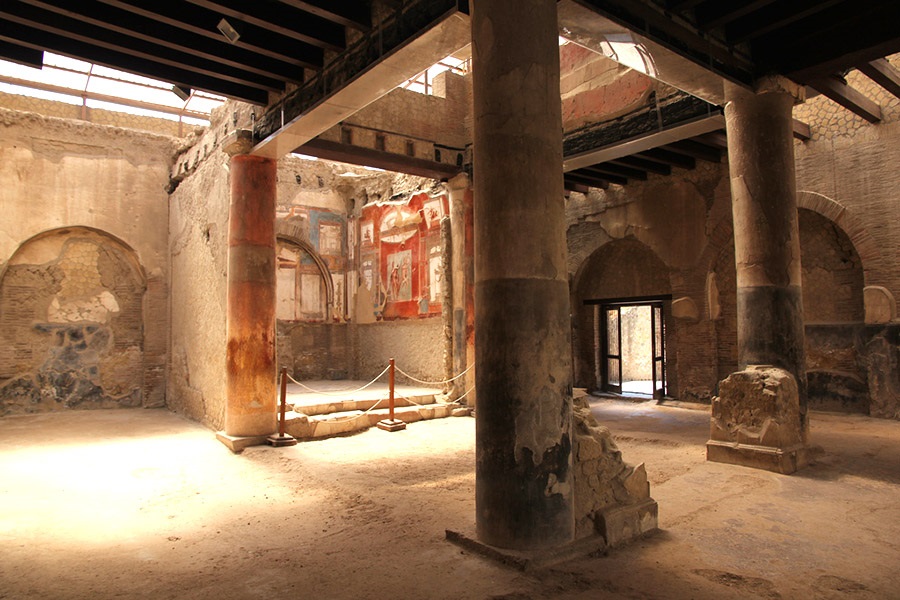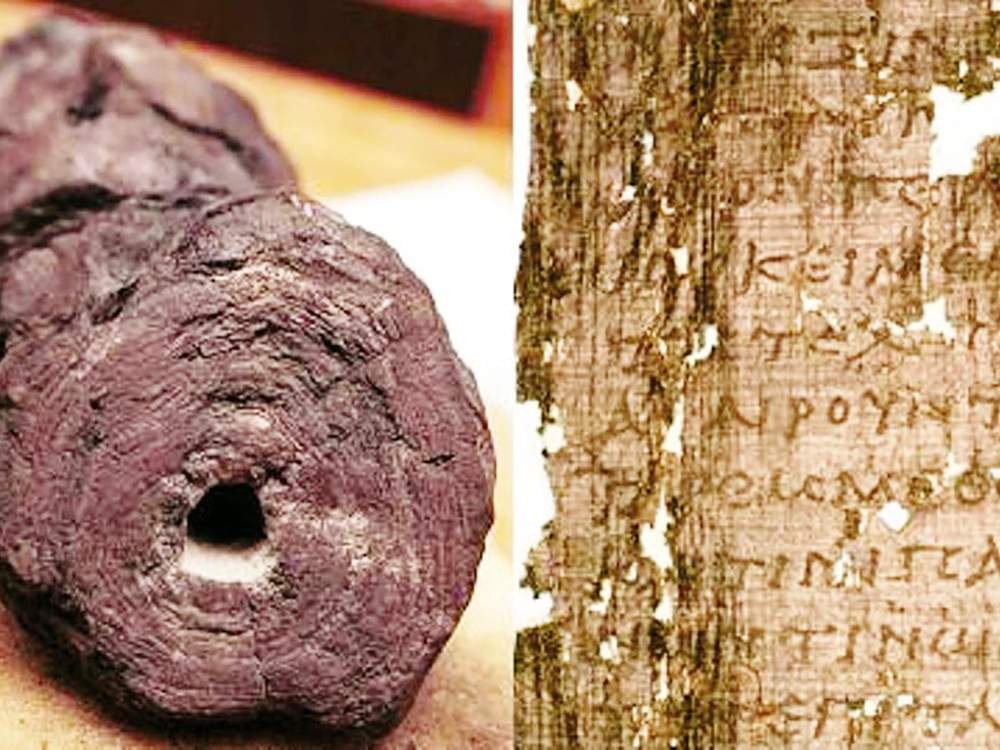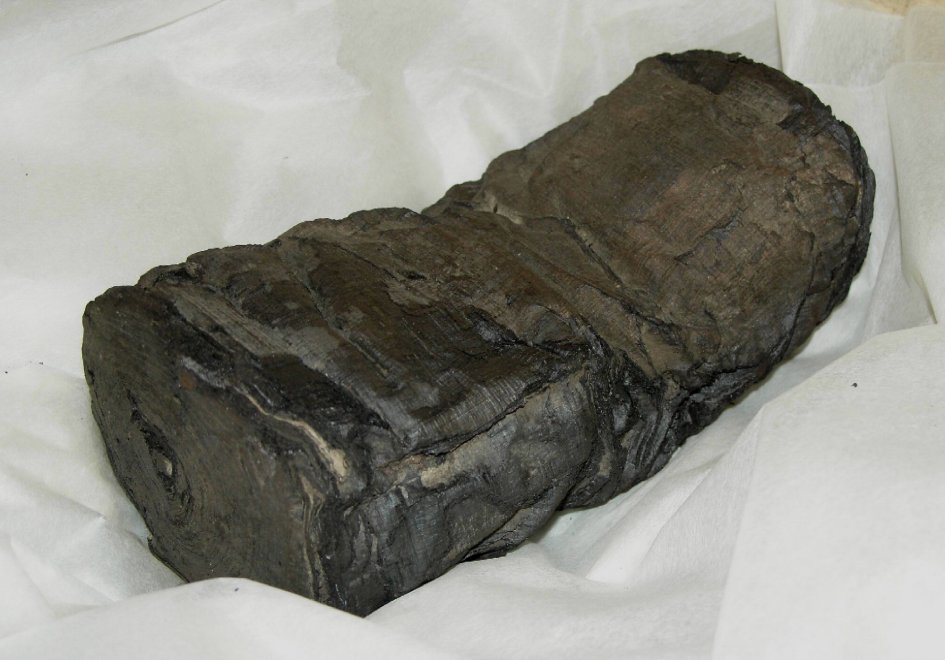
There are lost works in the Herculaneum library that only technology will be able to resurface from oblivion. Indeed, art and culture have a fascinating way of intertwining with science, especially when it comes to revealing the mysteries of the past. In
recent times, we have witnessed a true technological miracle, thanks to which ancient words imprinted on fragile papyrus scrolls have been unearthed. These scrolls, witnesses to a forgotten era, perhaps contain literary works that could change our understanding of history.
Here is the story of the works housed in the charred library at Herculaneum.
The lost Greek and Latin works in the Herculaneum library

Centuries after the devastating eruption of Mount Vesuvius in 79 A.D., buried in a building in Herculaneum, charred but valuable papyrus scrolls were discovered. Despite their state they represent the only library from the ancient world that has come down to us, stimulating the curiosity of scholars for more than 250 years.
The great hope? That unknown Greek or Latin literary works are hidden among them.
TECHNOLOGY IN THE SERVICE OF HISTORY
Recently, a combination of artificial intelligence and advanced X-ray scans identified a word on one of the scrolls: πορϕυρας, which translated from ancient Greek means “purple.”
Although this represents a significant step, uncertainty remains as to how much of these scrolls we will actually be able to read in the future.
Indeed, the reading of this word has access to the hope of one day being able to know the contents of the scrolls in the Herculaneum library, but the road ahead is definitely long and not without difficulties.
The archaeological excavations of Herculaneum and Pompeii, in this respect, never cease to amaze, and the Herculaneum library is only the latest of many wonders at these amazing archaeological sites.
Its importance is undoubted, as is the discovery of some of the names of the painters of Pompeii and active before the eruption of Vesuvius.
The Herculaneum library was discovered in the eighteenth century, as soon as the “Villa of the Papyri” was discovered, in 1752, an imposing four-story residence built on a cliff overlooking the sea. Incredibly, because of the eruption, its location is now more than 500 meters from the coast, thus far from the powerful force of nature.
While Pompeii was buried under ash and pumice, Herculaneum was submerged by a dense mudslide. This difference has made the rediscovery of Herculaneum, since the 18th century, more complex than Pompeii (by the way, I recommend you read Secret Pompeii to learn some little-known details). History tells us, in fact, that the city was almost forgotten, so much so that it was renamed Resìna in the Middle Ages, returning to its ancient name only in 1969.
Right from the 18th century, thanks to the curiosity of nobles and kings, the area of Herculaneum was explored through wells and tunnels, bringing to light wonders of antiquity. The Villa of the Papyri, in particular, offered more than 1,800 carbonized papyrus scrolls, a treasure of inestimable value.
If visiting Pompeii therefore can prove to be one of the most beautiful experiences to be had at least once in a lifetime, Herculaneum can amaze even more with its secrets and continuous discoveries.
By the way, I advise you to book your visit to Pompeii well in advance because it is one of the most famous and visited archaeological sites in the world, and you certainly cannot arrive at the entrance to buy your ticket on the day you want to visit. Here’s how to get Pompeii tickets.
PAPYRUS SCROLLS FROM HERCULANEUM AND THE POSSIBILITY OF REDISCOVERING UNKNOWN WORKS
Papyri were the main medium for writing during ancient Greek and Roman times.
They were therefore a means of communication that we can consider as the predecessors of the modern book. However, time and circumstances have left these papyri in a state that has made them unreadable, as they are in fact charred.
Despite the poor state in which they were found, however, they potentially conceal literary works by authors such as Aeschylus, Sophocles, Euripides and Livy.
Over the years, numerous attempts have been made to read these papyri.
A machine invented in 1753 by Antonio Piaggio, a religious in the service of the Vatican Library, offered some hope. However, the results were not brilliant, and some papyri were found to hold the works of the philosopher Philodemus of Gadara, but many others remained illegible.

The Herculaneum library scrolls represent a direct connection to an ancient past, and thanks to modern technology, we hope to uncover more and more of their secrets. As excavations and research continue, who knows what other wonders await us deep within the Villa of the Papyri.

